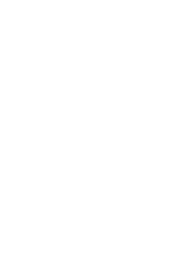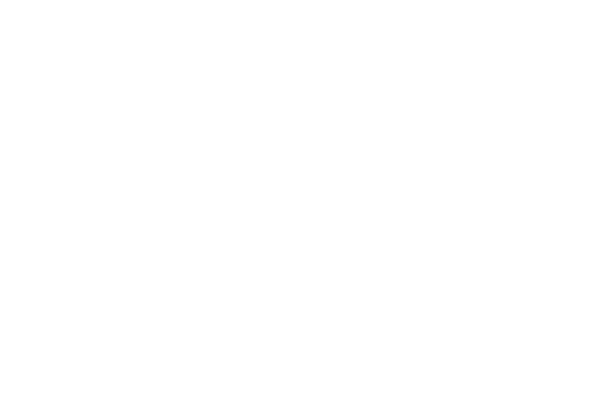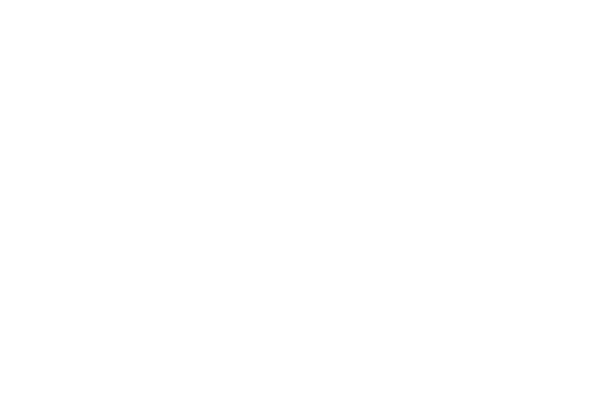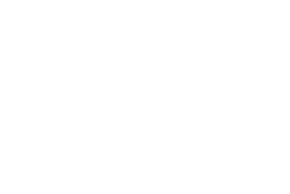 |
 |
 |

|
In Captivity – C.C.P.
Koen Vanmechelen
2014
Sketch by Koen Vanmechelen
Koen Vanmechelen
The Belgian conceptual artist Koen Vanmechelen is internationally
renowned for his Cosmopolitan Chicken Project, a worldwide artistic
breeding project began in 1999 in search of a hybrid or cosmopolitan
chicken. This super chicken would eventually carry the genes of all
breeds of chicken on this planet. His work, an ode to life, revolves around
two major themes: biocultural diversity and identity. For his projects,
the artist collaborates with scientists from all over the world.
Exhibited works
|
|
 |
PALAZZO FRANCHETTI
Genius Loci
(Spirit of Place)
7/6/2014-23/11/2014
On the occasion of the 14th International Architecture Biennale in Venice, curated this year by Rem Koolhaas, the Lisson Gallery and Berengo Studio present an exhibition addressing the complex relationship between art and the public realm. By existing beyond the walls, ‘public’ art can help define the character of its location, sometimes functioning harmoniously and sometimes in tension with the architecture or landscape it inhabits.
|

|
Posted 7 June 2014
|
Share this:
|
|
In classical mythology, the Latin term genius loci refers to a protective spirit attached to a place –– a guardian who watches over their part of the world and imbues it with a special character. In modern reality, we still need to be able to identify a genius loci in order to give us an understanding of our environment. One way of negotiating between the public realm and the individual is through common symbols –– in the form of works of art –– that help us identify with our landscapes. Whether those symbols add, enhance, complement or even come to represent their surroundings depends on the impact and intention of the works of art being placed. Anish Kapoor’s Cloud Gate, for example, was conceived as a central focus for the Millennium Park in Chicago, drawing the sky and the surrounding buildings into its seamless, curved stainless steel surface, in keeping with the artist’s wider aesthetic. Yet, since its unveiling in 2006, Kapoor’s undulating and essentially abstract sculpture has become an unofficial emblem of the city, a tourist attraction in its own right and, perhaps, the contemporary definition of a genius loci.
|
|
|
|
|
|
|

Daniel Buren
4 Colours at 3 Metres High, 2014
Clear acrylic sheets, coloured self-adhesive filters,
wood, screws, white paint, self-adhesive black vinyl
This newly constructed walkway, which washes the visitors,
the walls and floors with coloured shadows, is a variation
on the theme of the pergola or an ‘attrape soleil’, which
Buren has explored in several public works. It plays with
outdoor light, the movement of the sun and changing
visual effects.
Photo: Palazzo Franchetti
|
|
|
|
|
|
|
Another public project that reflected and perhaps improved its environment, began around the same time in Culiacán, a city in Mexico known for its drug-related gun crime.
The Mexican artist Pedro Reyes reacted to a government weapons amnesty there by melting down guns to make an equal quantity of shovels. These in turn were used to plant the same number of trees, 1,527 to be precise, both in Culiacán and in different locations around the world. Despite Reyes’s Palas por Pistolas seemingly representing the inverse impetus and proportion of Kapoor’s monumental symbol, it also responded to its location, arguably also managing to distill something of the spirit
of its place, albeit in a very different way.
As experienced producers of large-scale public commissions, Lisson Gallery and Berengo Studio present a range of major artworks by 19 artists, both inside and outside the historic Venetian Palazzo Franchetti. The exhibition also includes models, drawings and proposals of public projects –– some unrealized, some temporary, some permanent –– along with photographic documentation of actual objects as they exist out in the world, all displayed in a special laboratory room, within a structure designed by the London-based architectural practice Carmody Groarke.
|
|
|
|
The exhibition focuses on real (as opposed to notional), life-size sculptures, most of which are not propositions for bigger or more public works, but simply standalone examples of how artists engage with material, space, place, architecture, fellow humans and nature. In the final reckoning, surely the test of any great work –– public or private –– is that it helps us better appreciate, contemplate and understand the world around us. When architects, artists, developers, and planners fully understand this, then the results, in terms of public art, can truly attain the character of genius.
Participating artists: Greg Hilty, Lisson Gallery, Patrizia Spadafora, Berengo Studio, Ai Weiwei Genius Loci (Spirit of Place), Daniel Buren, Tony Cragg, Richard Deacon, Spencer Finch, Dan Graham, Shirazeh Houshiary, Anish Kapoor, Richard Long, Tatsuo Miyajima, Julian Opie, Pedro Reyes, Santiago Sierra, Lee Ufan, Koen Vanmechelen, Joana Vasconcelos, Lawrence Weiner, Richard Wentworth and Tokujin Yoshioka

|

|

|

|

|
|
|
Tony Cragg: Hedge, 2010
Fiberglass
200 °— 380 °— 150 cm
The interlocking shapes of this multipartite piece
are inspired by agricultural fences and countryside
hedges. Its fabulously complicated, flexible form ––
an outer skin hiding something that is alive with
energy underneath –– is constructed in sections and
can be multiplied in scale and length.
Tony Cragg is one of Britain’s foremost sculptors. Constantly pushing to
find new relations between people and the material world, he works with
stone, wood, glass, aluminium, cast bronze and cast iron, as well as
fibreglass and kevlar. His early works were assemblages or conglomerations
of found materials, utilising everything from plastics to domestic
items such as dice, ranged together like molecules in a giant organism.
He then began employing techniques such as turning, welding and casting
for ever larger and more complex works, which fuse industrial processes
with naturalistic forms. Cragg has created major public works all over
the world, including numerous sculptures in Asia, Europe and America.
Cragg’s work is particularly well represented in Germany, where he
founded a sculpture park in 2006, at Waldfrieden in Wuppertal, where
he has been based since 1997.
|
|
|
|
|
Anish Kapoor
Non-object (door), 2008
Stainless steel
281.3 °— 118.1 °— 118.1 cm
Kapoor has created a group of sculptures he calls
‘non-objects’, whose twisted geometry and perfectly
reflective material carry the conditions of their own
disappearance. Kapoor’s curved forms provide a
lens that shows the universe as it really is, where light
is warped on its way through space and our intuition
is turned inside out.
Anish Kapoor is one of the most influential sculptors of his generation.
Perhaps most famous for public sculptures that are both adventures
in form and feats of engineering, he manoeuvres between vastly different
scales, across numerous series of work. Immense PVC skins, stretched or
deflated; concave or convex mirrors whose reflections attract and swallow
the viewer; recesses carved in stone and pigmented so as to disappear:
these voids and protrusions summon up deep-felt metaphysical polarities
of presence and absence, concealment and revelation. Forms turn themselves
inside out, womb-like, and materials are not painted but impregnated
with colour, as if to negate the idea of an outer surface, inviting the viewer
to the inner reaches of the imagination.
Exhibited works
|
|
|
|
|
Tatsuo Miyajima
Life (Corps sans Organes) No.15, 2013
LEDs, microcomputer, steel, plastic covers,
passive sensor, electric wire
274 °— 186 °— 82 cm
Tatsuo Miyajima is one of Japan’s foremost sculptors and installation
artists. Employing contemporary materials such as electric circuits, video,
and computers, Miyajima’s supremely technological works have centred on
his use of digital light-emitting diode (LED) counters, or ‘gadgets’ as he
calls them, since the late 1980s. These numbers, flashing in continual and
repetitious –– though not necessarily sequential –– cycles from 1 to 9,
represent the journey from life to death. Miyajima’s LED numerals have
been presented in grids, towers, complex integrated groupings or circuits
and as simple digital counters, often on a public scale, but are all aligned
with his interests in continuity, connection and eternity, as well as with
the flow and span of time and space. “Time connects everything,” says
Miyajima. “I want people to think about the universe and the human spirit.”
|
|
|
|
|
|
Let us begin with the myth: In the spiritual pantheon of the ancients, beneath the peaks of the gods, and among fertile banks, valleys and coastal plains inhabited by man, lived semi-divine deities; dryads, nymphs and genii apportioned to guard, guide, and sometimes meddle with the busy work of life on Earth.
Every fountain, fortress, and forest glade had its own genius loci, a personified spirit who dwelled in a particular place. In order for a structure to stay intact, the genius of its location had to remain. Genii locorum were not immortal, and the gods were apt to punish those who would cause the protective spirits to flee or fall.
Geese, associated with the ‘genius’ of the Roman Capitol, woke the consul Manlius Marcus in 390 BC, allowing him to defend it from invading Gauls. The Tower of London –– and the kingdom –– will stand, according to legend, as long as its six guardian ravens remain. Gradually, however, anthropomorphic readings of the phrase slid towards a more ineffable sense of authenticity. Taken up by landscape designers during the nineteenth century, genius loci usually suggested the indistinct, yet ineluctable virtue of a place due to its environmental, cultural or spatial values. A spiritual preexistence, which ensures continuity between all things borne of a specific location: the idea of the genius loci endures, as does our fascination with the particularities of place.
As the artist and architect Vito Acconci points out, art is one of the only disciplines whose very name reifies itself; ‘art, when pronounced as being such, is immediately valorised as a connection to the sacred; man’s confrontation with the consciousness and continuity of being’. This perception, whether demanded or not, projects onto the artist a freedom which Marshall Berman describes as ‘a perfectly formed, perfectly sealed tomb’; artistic production becomes a disclosure of the condition of being.
By contrast, architecture fancies itself as beleaguered, or at least beholden to functional constraints of housing the activities of being. Together with disciplinary contingencies of legal, political, economic and technological structures, this allows architecture professionals to imagine the artist as a relatively liberated figure.
The Venice Biennale is itself an illustration of the uneasy yet eager relationship between these two ‘worlds’. The biennial art exhibition has been running since 1895, while architecture had to wait for almost a century before being formally acknowledged. In 1980, the first ever designated Venice Biennale of Architecture was directed by the Roman architect Paolo Portoghesi, under the title ‘The Presence of the Past’.
|
|
|
|

Exposition view
Shirazeh Houshiary: Glass tower (Berengo), 2014
Photo: Palazzo Franchetti
|
|
|
|
|

|

|

|
Just as Portoghesi was devising his 1980 Biennale –– which included the theatrically postmodern ‘Strada Novissima’ installation –– the Norwegian theorist Christian Norberg- Schulz published his influential book, Genius Loci: Towards a Phenomenology of Architecture. An aside: It’s funny to note how things turn in circles. Several years prior to this first architecture Biennale, Portoghesi and some friends took a walk around the Roman forum. It was Portoghesi’s partner, the engineer Vittorio Gigliotti who pointed out, to a young and rapt Norberg-Schulz, an ‘altar’ to the deity or ‘genius loci’ of that place… For Norberg-Schulz, the needs of society and community were to be appropriated through the readings of Heidegger: architecture could act as a poetic attempt to materialize the existential space of the human being.
A student of Siegfried Giedion, he shared his mentor’s concern for the modern separation between technological advances and human experience, or in Giedion’s own words (expressed, for example, in Mechanization takes Command), the split between thinking
and feeling in modernity.
Legend and Locus
At the first post-war meeting of CIAM (Congrès Internationale d’Architecture Moderne), Norberg-Schulz had observed the Anglo-Italian architect Ernesto Nathan Rogers valorizing the pre-existent ambience of ‘place’. Ears thus ringing with the humanist tremors shaking the foundations of High Modernism, his own theories on the genius loci sought to restore balance through focussing on the essential, elemental qualities of space.
An emphatic observation of found conditions would allow for place-specificity, for acknowledgment of the genius loci without exclusion. Belonging would be found in materials, landscape, topography, and the play between ground, sky, enclosure and threshold. These fundamental qualities would provide ground against which to establish both continuity and difference. ‘The role of the architect is to make people see the special nature of the location’, Norberg-Schulz wrote; architecture’s
insertion into the natural order would provide it with significance.
Norberg-Schulz’s theories firmly established a place for phenomenology in architectural theory; against this history, one could map a parallel rise of abstract and conceptual shifts within art, as well as the rise of Land art and site-specific projects. However, Norberg- Schulz’s genius loci, in its quest to resolve the profound and the particular, does not allow for the shifting paradigms of culture, where the politics of place and meaning are in continual flux.
|
|

Exposition view
Photo: Palazzo Franchetti
Shirazeh Houshiary: East Window, 2008
St Martin-in-the-Fields Church, London, UK
In collaboration with the architect Pip Horne, Houshiary
created a sublime fusion of contemporary art and
classical architecture for this Grade I listed church.
The glass, held within a stainless steel framework, is
made of mouth-blown clear glass panels etched on both
sides with a subtle, feathery pattern, a recognisable
hallmark of Houshiary’s paintings.
|
|
|
|
|
|
|
As Hal Foster has written, we can no longer uphold any pretence of separation between the cultural and the economic. In its reduced reading as ‘the essence of place’, genius loci allows for just such a separation –– a virtuous singularity elevated above politics, but susceptible to commerce. This saleable idea is artfully employed in the service of urban regeneration and city-making.
Today, art and architecture are locked in an embrace of mutual exploitation; together, they go shopping. Both disciplines have long been instrumentalised by state or sovereign, underlining existing power structures and latterly, market dynamics. Behold the abundant litter of recently established museums and galleries: the very act of hosting art –– within an arresting architectural stage, of course –– is charged with boosting the economic profile of depressed regions.
Contemporary public space is characterized by a tension between economic forces, political agendas and cultural resistance. In the parlance of urban regeneration, the closest living relative of the genius loci goes by the name of ‘place-making’ –– an equally mystical process by which denuded space is made into ‘place’.
When rampant speculation threatens to strip a place of all identity, art is drafted in to endow a ‘neutralised’ ground with meaning and focus. (Occasionally architecture is called upon to perform similar feats of repair, albeit conflicted by its own role in the undoing.) For the artist, this is a heavy load. If genius loci originally corresponds to authenticity and preexistence –– whether in cultural residue or material, sensuous quality –– the aim of conferring identity and meaning is dubious.
When the values embodied in artworks are not reflective of values of their viewing public, then any attempt to confer authenticity –– or to reconcile between deities and earthly planes –– will be unsuccessful. In the legislative negotiations that hitch public art to development, redemption is sought through inscrutable, spectacular commissions (wherein the art objects, like real estate, act also as investments).
This effectively repositions corporate interests as the provision of public good. Yet to allow for a public encounter with art in the space of everyday life, outside of the rarified confines of the museum and gallery, is surely an unimpeachable intent. Public art is not subject to controlled conditions; its viewers are not required to behave or respond in a manner encoded by the architecture of designated art spaces. It may face ambivalence; equally it may offer delight, intrigue, a perspectival challenge to prevailing and sanctioned narratives.
Liberated by the functional constraints of building, artworks that are intended to coexist with architecture can animate and play with it.
Responding to physical, material and ideological conditions found in the built environment, their mutual exploitation can, so to speak, turn a profit. At its best, art in the immediacy of the public realm can offer an authentic response to the experience of place.
The selection of works and artists exhibiting here are assembled on the grounds that their work has been exhibited in a public context; that is to say, that at a certain time, their work has been brought into encounter with a broader public, additional to a self-defined museum-going audience. Furthermore, several of the artists and artworks here respond directly to an architectonic or urban condition. This text chooses not to mention the particular works, nor does it offer much in the way of cushioning the relationship between notable artists or architects. There are shared tools, of course, and these may be observed in any number of the works on display: modulations of light and form, circulation and movement; echoes of industrial and post-industrial material pasts; humane gestures of wit and critique. Norberg-Schulz’s concerns for ground and the sky come into it, as do the glass-andsteel tectonics of the late-capitalist city.
Yet the real feat of the works assembled here will be reached through experience alone, and following this, through contemplation of their dis-location. If the title suggests contemplating the essence of specific places, the realisation of genius loci occurs in the transposition between the works as experienced, and as sited in other conditions.
Shumi Bose
Shumi Bose is an historian, editor and teacher based in London. She teaches histories and theories of architecture at the Architectural Association and at Central Saint Martins College of Art and Design. She was a curatorial collaborator for the 2012 Venice
Biennale, co-editing Common Ground: A Critical Reader and is a contributing editor for Blueprint magazine.
|
|
|
|
About Lisson Gallery
Lisson Gallery is one of the most influential and longest-running international contemporary art galleries in the world. Since being founded in 1967 by Nicholas Logsdail, it has championed the careers of artists who have transformed the way art was made and presented. It continues to support the future of its artists, the legacy of historical figures, the evolving practice of established artists and the wide-ranging potential of emerging and new talents.
This collaboration is part of the Lisson Presents programme, a series off-site exhibitions that extends the legacy of curatorial innovation beyond its gallery spaces, working with institutions and artists to present new initiatives around the world.
Recent projects include two celebrated Collateral Events of the 55th International Venice Art Biennale in 2013; Shirazeh Houshiary’s Breath, a unique, site-specific installation in the Torre di Porta Nuova adjacent to the Arsenale; and Ai Weiwei’s Disposition, an exhibition of two major works by Ai Weiwei addressing his arrest by the Chinese Government and the 81-day period subsequently spent in captivity.
About Berengo Studio
The Berengo Foundation and Studio are innovators in the dissemination and experimentation of glass as a material for the expression of contemporary art. During the 1980s and ’90s, the studio’s founder, Adriano Berengo, invited artists to use glass and collaborate with master glassmakers to translate their – generally pictorial – works into glass sculptures. Berengo Studio strives to free glass from its perception as a functional material and to update the highly decorative traditions of Murano glass.
For almost twenty years, more than 140 international artists have come to the Berengo furnace to create glass sculptures and have contributed to making this ambitious project real. With galleries in Venice, Murano and Tokyo, Berengo Studio works are found in numerous public and private collections throughout the world.
www.lissongallery.com | www.berengo.com
Opening hours Monday-Sunday 10am-6pm
Palazzo Franchetti
S. Marco, 2842
I-30124 Venice
+ 44(0)20 7724 2739
www.palazzofranchetti.it
|
|
|
|
|
|
|


